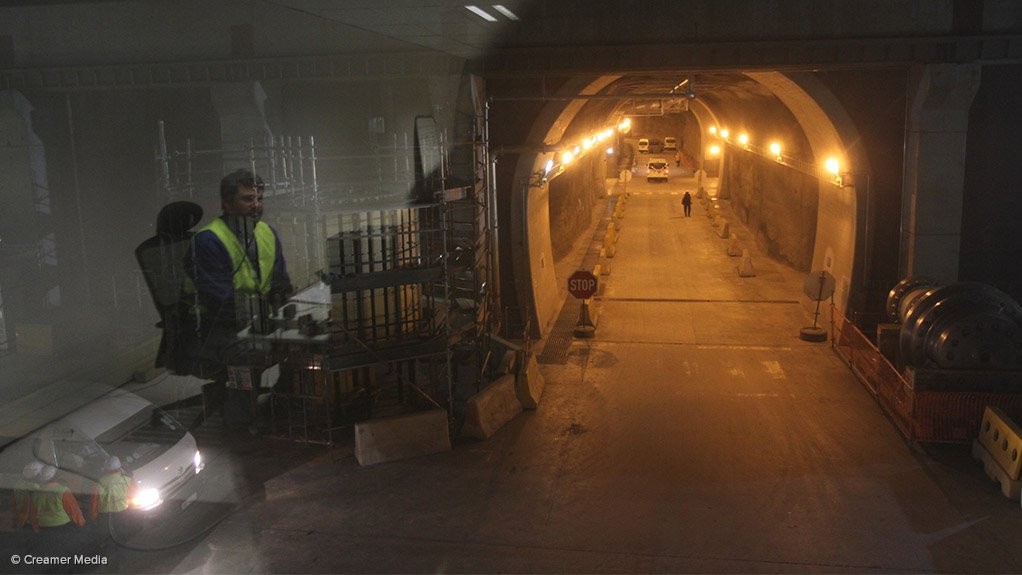Electricity tariff increase will push mining costs up 33% by end-2024 – Minerals Council
The Minerals Council has noted with dismay the above-inflation electricity tariff increase of 18.65% that the National Energy Regulator of South Africa granted to Eskom in its 2023/24 financial year, starting April 1.
This increase, coupled with the 12.74% tariff increase that is scheduled for the following financial year, will translate into a R13.5-billion, or 33.7%, increase in the mining industry’s electricity costs to R53.5-billion by the end of 2024, the council states.
Over the four years between 2021 and 2024, electricity tariffs would have increased by 46%, the Minerals Council reports, adding that the price of electricity for the mining industry has increased eightfold since 2008.
Electricity will make up 12.5% of the South African mining industry’s costs by the end of 2024, compared with 9% currently.
Minerals Council chief economist Henk Langenhoven says these tariff increases fundamentally shift the intermediary cost structures in mining. Owing to the different electricity consumption densities of various mining commodities, the impact is not the same across the sector, but this is deeply concerning, he adds.
Additionally, the higher cost of electricity means the share of energy in intermediary inputs will increase from 24% to 38% in gold mining, from 22% to 37% in iron-ore mining and from 13% to 19% in the platinum group metals sector.
While the council welcomed the removal of the cap on the size of private sector electricity generation projects, which was declared by government last year, the council says mines still need absolute energy certainty when sending employees underground, to ensure they can return safely to surface. This while smelters require sufficient time to ramp down as sudden losses of power result in catastrophic and expensive damages.
Langenhoven says average input costs were running at above 15% at the end of 2022. The new tariffs could add four percentage points to costs, materially squeezing profit margins, and this against the backdrop of already declining mining production – 6% year-on-year in 2022.
He notes that an adverse operating environment of unreliable and expensive electricity, coupled with a crisis in transport logistics for bulk mineral exports, erodes the mining sector’s global competitiveness and may well culminate in job losses in mining.
Over the medium to long term, these uncertainties bode ill for starting new mines and extending the lives of older, marginal assets.
For mining companies building mines that have lives of decades, it is essential that they have the ability to accurately estimate long-term electricity prices and supply, as well as secure reliable and cost efficient transport, both of which are crucial considerations in deciding whether to start new projects.
SOLUTIONS
The Minerals Council estimates the private sector in South Africa has a total pipeline of 9 GW of energy projects in solar, wind, gas and battery storage. By expediting those projects and reducing reliance on Eskom, the power utility can turn its focus to the critical maintenance and refurbishment necessary on some of its power plants.
The mining industry alone has a pipeline of 7.5 GW of energy projects on standby or in development, which are worth more than R150-billion combined.
The council expects 3 GW of these projects to be completed by the end of 2024.
The mining sector consumes about 14% of Eskom’s total electricity output; adding smelters and refineries, the mineral sector consumes about 30% of Eskom’s output, therefore, Eskom will remain a source of baseload electricity supply for the mining industry nonetheless.
Comments
Press Office
Announcements
What's On
Subscribe to improve your user experience...
Option 1 (equivalent of R125 a month):
Receive a weekly copy of Creamer Media's Engineering News & Mining Weekly magazine
(print copy for those in South Africa and e-magazine for those outside of South Africa)
Receive daily email newsletters
Access to full search results
Access archive of magazine back copies
Access to Projects in Progress
Access to ONE Research Report of your choice in PDF format
Option 2 (equivalent of R375 a month):
All benefits from Option 1
PLUS
Access to Creamer Media's Research Channel Africa for ALL Research Reports, in PDF format, on various industrial and mining sectors
including Electricity; Water; Energy Transition; Hydrogen; Roads, Rail and Ports; Coal; Gold; Platinum; Battery Metals; etc.
Already a subscriber?
Forgotten your password?
Receive weekly copy of Creamer Media's Engineering News & Mining Weekly magazine (print copy for those in South Africa and e-magazine for those outside of South Africa)
➕
Recieve daily email newsletters
➕
Access to full search results
➕
Access archive of magazine back copies
➕
Access to Projects in Progress
➕
Access to ONE Research Report of your choice in PDF format
RESEARCH CHANNEL AFRICA
R4500 (equivalent of R375 a month)
SUBSCRIBEAll benefits from Option 1
➕
Access to Creamer Media's Research Channel Africa for ALL Research Reports on various industrial and mining sectors, in PDF format, including on:
Electricity
➕
Water
➕
Energy Transition
➕
Hydrogen
➕
Roads, Rail and Ports
➕
Coal
➕
Gold
➕
Platinum
➕
Battery Metals
➕
etc.
Receive all benefits from Option 1 or Option 2 delivered to numerous people at your company
➕
Multiple User names and Passwords for simultaneous log-ins
➕
Intranet integration access to all in your organisation





















